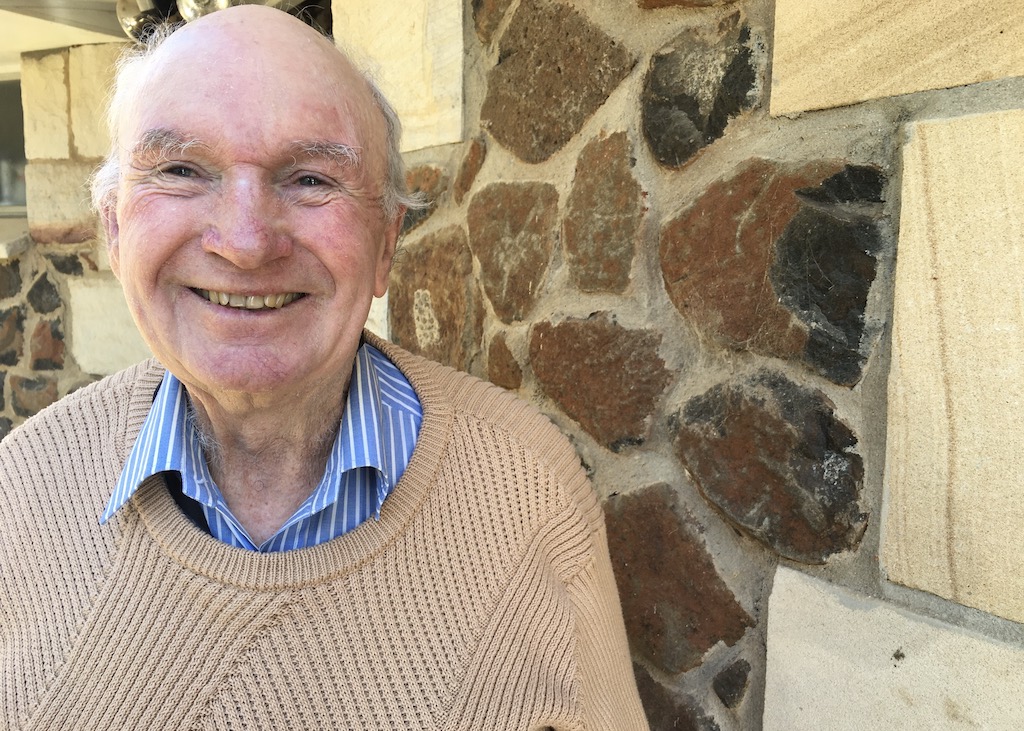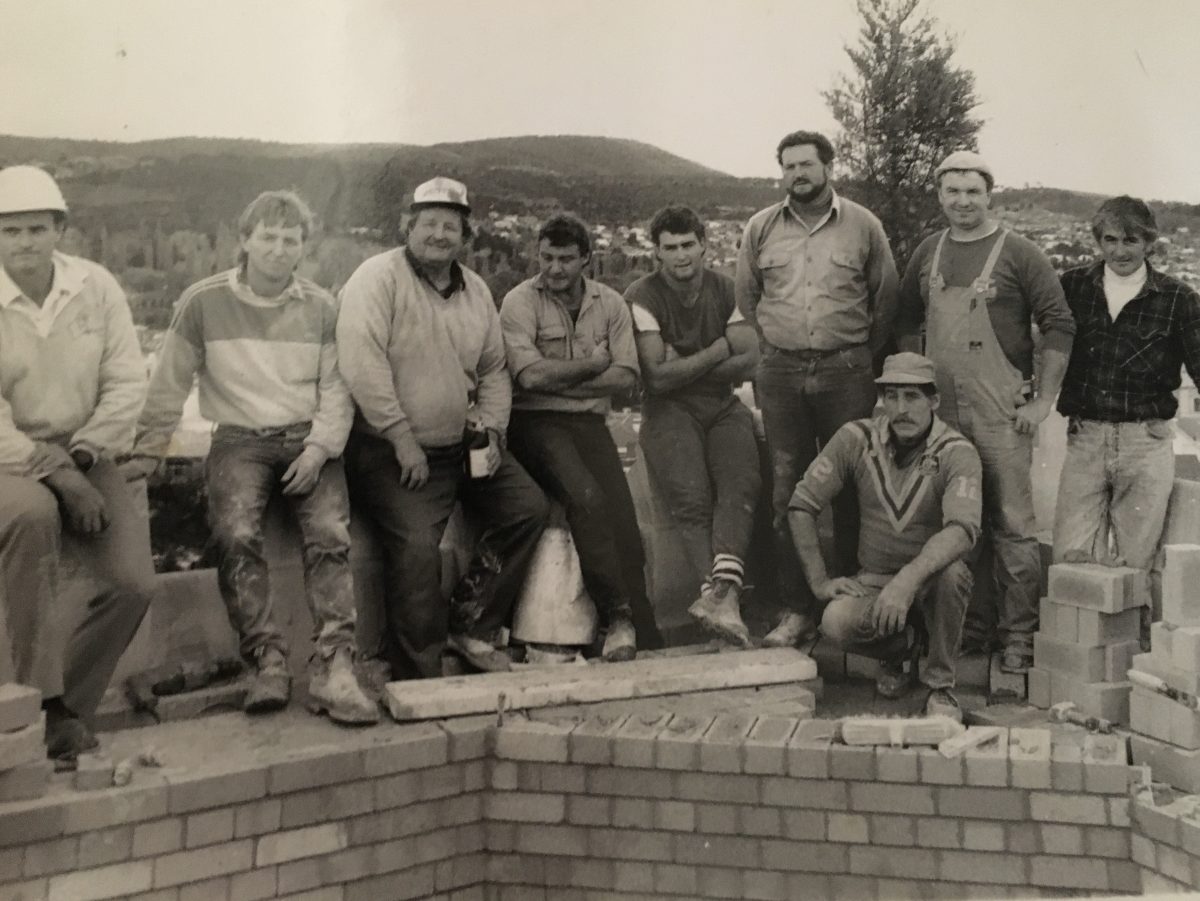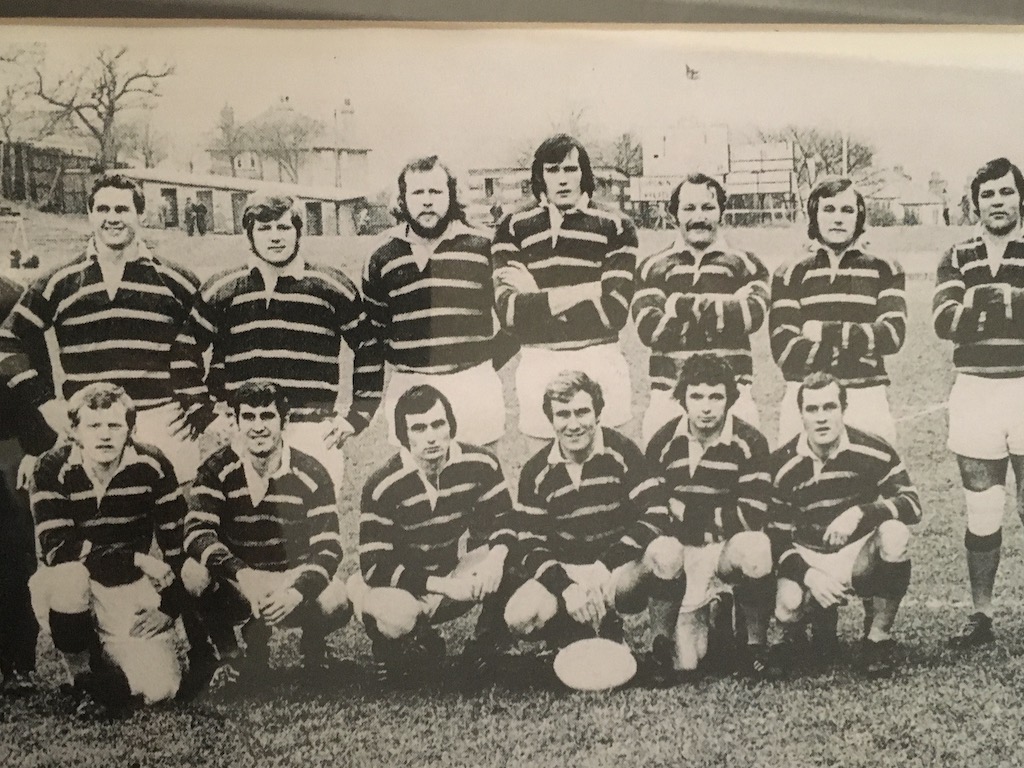
Much of Brian Doyle’s working life was spent restoring churches and public buildings in Sydney. Coming from England, he settled in Crookwell, married Robyn Cosgrove in 1989 and they raised three daughters, Tori, Shelby and Bridie. Photo: John Thistleton.
Whether on a sandstone-strewn building site overlooking a city, a windswept football field or a warm pub, Brian Doyle drew other people into his circle.
“He could hold people together,” his wife of 34 years, Robyn, said. “That’s what made me fall for him.”
He came from England’s north to Australia in 1974 as a rugby league halfback and stonemason. These days, he reminisces about his years playing and coaching football, but underplays his achievements as a stonemason.
By the early 1980s, he had such a sound reputation, master mason of Australia George Proudman recommended him for a major restoration of the Goulburn Courthouse. Consequently, the stone consultant on that project, Gordon Inglis, appointed Brian and was so impressed with his work the two men worked together for the next 30 years on restorations, many on Australia’s oldest sandstone churches in Sydney.
“Once we did the first job in Goulburn – and we did a beautiful job – we were good ‘stone friends’ from then on,” Gordon said. “Brian was good at the technical work. He was a good organiser. The men he had working with him, he worked well with them.”
High-end builders working on Sydney’s luxurious waterfront mansions sought his skills. He did sandstone additions and columns and rejuvenated existing stone features for a palatial Point Piper home in Sydney that last year sold for $130 million.
He restored the old courthouse in Maitland, replaced balustrades along Eddy Avenue near Central Railway Station, and worked on many other NSW heritage properties, identifying and replacing stones and repointing stonework. He excelled in the fine work of window tracery, the decorative method of providing the stone framework and support needed for windows of great spans.
When Gordon retired from consulting for NSW Public Works, he continued calling on Brian, including for the Holy Name Church (Villa Maria) at Hunters Hill. At the time, the church was more than 150 years old with badly worn and severely weathered stonework.
While working on a substantial home for former News Limited chief executive Ken Cowley, Brian heard the Public Works stone yard had to be moved from Homebush to make way for Olympic Park and they needed to dispose of the stone. He suggested bidding for the stone and if successful, Cowley could go halves with him. His bid was accepted, and he took what stone was left over after completing the Cowley project.

On top of St Saviour’s Cathedral belltower, which was added to the church as a 1988 Bicentennial project, is the team of stone workers. Brian Doyle is standing second from the right. Photo: Doyle family collection.
Of all the projects he has completed, he is most proud of Goulburn’s St Saviour’s Cathedral tower, a 1988 Bicentennial project funded by a $1 million grant and much parish fundraising.
“A lot of people don’t know this: it has half a million bricks in it,” Brian said, revealing the fortifying behind the gracious sandstone exterior.
When the master mason overseeing the project returned to England, Brian took over, ensuring intricate stonework was fitted. Heritage architect John Armes was talking to Robyn during the project, shaking his head in wonder about Brian’s eye for detail.
“You give him plans and he loses them, but it doesn’t matter, he remembers everything.”
He and friends Bill and Bruce Gay built almost from scratch machines at his Crookwell stone yard.
“Bill bought a huge lathe sight unseen, and too big for what was needed at his garage,” Brian said.
“I said, ‘How much do you want for it?’ and he was happy just to get rid of it.”
Tweaked for cutting stone, the lathe had arrived just in time to cut stone used to replace several hundred balusters at Central Station.
Brian comes from Huddersfield, in Yorkshire, where he learned stonemasonry from Bob Doyle, who had married his aunt Pat and had the same surname.

Huddersfield rugby league team in 1973. A future Australian coach, Greg Veivers, is third from left, back row, next to a future successful National Rugby League coach, Wayne Bennett. Brian Doyle is second from right in the front row. Photo: Doyle family collection.
The home of rugby league, Huddersfield, is where the code was conceived in 1895. Brian and his three brothers, Jim, Ronnie and Trevor, are still highly regarded there, even though Brian left in 1974. In the previous season with Huddersfield, he had played alongside Australians Wayne Bennett and Greg Veivers, who talked him into coming back with them and playing in Brisbane.
From there, Bennett went on to become one of the National Rugby League’s most successful coaches, Veivers captained Australia and Brian headed to Group 8 and the Crookwell Green Devils. His most successful coaching stint was taking the reserve-grade side to a premiership over more-fancied rivals the Queanbeyan Blues. But when it came to stonemasonry, he finished on top of the ladder for many years.
Original Article published by John Thistleton on About Regional.












